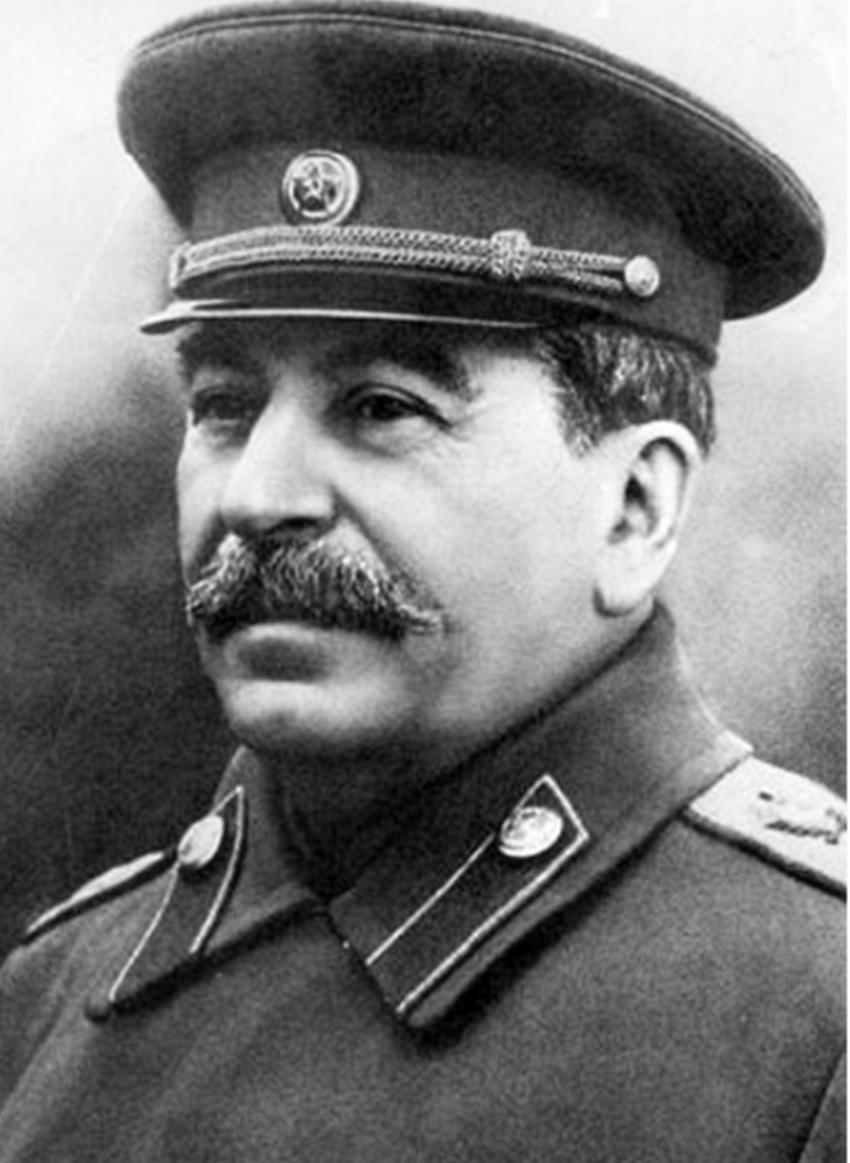In 2008, Russian state television held a selection of "the greatest Russians", and although Stalin had launched some campaigns and the Great Famine during his tenure, it did not prevent him from ranking third in the list of Russian historical figures (four to six, respectively, Pushkin, Peter the Great, lenin), behind Alexander Nevsky and Peter Stolypin.

In other words, during stalin's twenty-four years in power, since he came to power alone in 1929, have he considered who should inherit his mantle and become the next ruler?
In fact, as early as April 1923, at the Twelfth Congress of the Russian Communist Party, Stalin talked about this topic. In his organizational report, Stalin mentioned his desire to reform the present organs, that is, to expand the Central Committee.
Stalin pointed out:
"The present situation in the central organs of our Party is roughly as follows: there are a total of twenty-seven members of the Central Committee, which convene every two months. Of these twenty-seven, however, a core of more than a dozen people has been formed, and although their political work is very handy, there are risks. Maybe this phenomenon is a good thing, but we have to consider its harmfulness. Although these rulings at the core can accumulate certain leadership experience, they are very easy to be contaminated with the unhealthy atmosphere of arbitrariness and arbitrariness, and then detach themselves from mass work. If there is no next successor at the grass-roots level around these comrades, the thinking of these people who have accumulated a wealth of experience in the leadership will easily become rigid. ”
In addition to this reason, Stalin also proposed a second reason for the expansion of the Central Committee, that is, the problem of the "aging" of the leadership:
"The leadership at the core, as just mentioned, these comrades are gradually aging, and this leadership urgently needs a group of successors. Like Comrade Vladimir, you must know very well his physical condition. With the exception of Comrade Vladimir, the average age of the other comrades at the core is also very large, but it is unfortunate that there is no successor who can take over the leadership. ”
From this we can see that Stalin was already considering the question of his successor.
However, the second reason for the expansion of the Central Committee mentioned by Stalin, the problem of "aging" of the leadership, does not really exist.
On September 2, 1922, lenin, while talking to his sister Maria about the age of the revolutionaries, mentioned in small talk the age of his comrades and the time they had entered the Central Committee. In this chat, Lenin came up with a constructive idea that the members of the Central Committee should cover all ages. That is to say, the members of the Central Committee should be composed of several generations, including both twenty and thirty, forty, and fifty. In this way, older comrades can quickly familiarize themselves with the work with young people, so that the whole team can be rejuvenated while maintaining normal operation.
Stalin's secretary, Bakyanov, mentioned in his memoirs that lenin made his own proposal at the Politburo meeting in 1922:
"Comrades, I am in my fifties. And you guys, you're all in your forties. I think it is time to cultivate some fresh forces, and we should focus on cultivating some young people aged twenty or thirty, select outstanding talents from among them, let them take on the leadership work, and let the entire leadership team maintain their youth forever. ”
From here, we can see that Lenin had a set of ideas for the leadership team about youthful collocation. According to this assumption, lenin's letter to the Congress in 1922, the "political testament", was given to the six commissioners with age considerations.
In 1922, Lenin was fifty-two years old, while Stalin, like Trotsky, was forty-three years old; Kamenev and Zinovi were both thirty-nine years old; and the two youngest comrades, Bukharin and Pydakov, were thirty-four and thirty-two, respectively. From the ages of these six people, we can see an age echelon that is very much in line with Lenin's conception.
In this "political will", we can see a problem, that is, according to Lenin's conception, at least six people who appear in the will do not have the problem of "aging".
Why, then, did Stalin still use the "aging" of the leadership as a reason for the enlargement of the Central Committee? Didn't Stalin know Lenin's vision?
Obviously impossible.
The biggest reason why Stalin still wanted to use "aging" as a reason to persuade others to agree to the expansion of the Central Committee was that Stalin wanted to send "his own people" to the Central Committee and expand his power.
However, although Stalin intended to expand the Central Committee, he still did not consider his successor. Until Stalin was sixty years old and after winning the Great Patriotic War, he fell seriously ill and recuperated for a long time. It was then that Stalin realized that he was no longer young and that it was time to consider choosing a successor.
Stalin's public successors were Kuznetsov and Voznetszynsky. However, there is a rumor that Stalin actually intended to let the "Gray Bishop" succeed him. However, this argument simply does not hold water. If you want to support a successor, you must give him certain powers and give him some support, which is the most basic, and Stalin naturally did not fail to understand this truth.
Resources:
The Complete Works of Stalin, Stalin: The Unmodified Archives (The Road to Power)